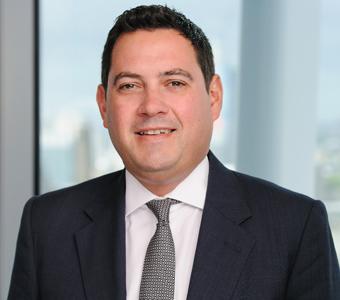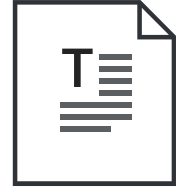Why, a privacy advocate recently asked on Twitter, were his social media channels presenting him with adverts for a brand of toothpaste he had never spoken about or Googled in his life?
Writer Robert G Reeve had been staying at his mother’s house for a week. His mother used one brand of toothpaste; Reeve used another. During the course of their week together, Reeve and his mother never mentioned the toothpaste yet, after returning home, Reeve became the target of online advertisements for his mother’s toothpaste. The question is: how could this happen?
If reading this makes you want to stick something over your phone’s camera or microphone, don’t. According to Reeve, the answer is more prosaic. It’s data. Data on an industrial scale. In his post, Reeve explained that phones and the apps we load onto them collect all sorts of data including the phone’s ID, geographic location, email addresses, purchases and more – and, wittingly or not, we tick the boxes to give our consent to this. That data is then sold to data aggregators, who combine it with other data from other sources to create a much richer picture of behaviour. That rich data set is then sold to advertisers.
So how did Mr Reeve’s phone know about his mother’s toothpaste? Because, according to Mr Reeve, location data would have shown him to be in close proximity to his mother’s phone for a week. Advertisers would see that correlation and so served him advertisements they felt would be relevant to him as part of that group. In short, the advertisers had compared ‘aggregated metadata’.
In 2019, The New York Times obtained one of these files of aggregated data. It contained 50 billion location pings from the phones of more than 12 million Americans. By examining the data, The New York Times’ team was able to identify visitors to the estates of Johnny Depp, Tiger Woods, and Arnold Schwarzenegger, as well as a senior official at the U.S. Department of Defense walking through a protest March.
I present you with these examples not to debate the rights and wrongs of data privacy but to illustrate how much of our everyday lives and experiences are already being captured and converted to data that can be interrogated and combined with other data sets. Google has famously stated that its mission is to organise all the world’s information and make it both useful and accessible. When Google first said this in 1998, it seemed far-fetched. Now, 23 years later, based on examples like those I’ve cited, it seems within the realms of possibility.
Digitising everything would, of course, have profound implications for the insurance industry. From a carrier’s perspective, it would give us the ability to provide valuable risk solutions. Risk transfer, risk advisory, modelling, data insights – all these things would be improved by several orders of magnitude. Our ability to price risk and to form intelligence from claims history would be vastly improved.
But there’s a challenge, which became clear to me earlier this year when I participated in a panel discussion at The Business of Resilience Conference hosted by the Department for International Trade. I was offering an LSM perspective alongside high-level stakeholders, industry leaders, government advisers and experts. It provoked me to contrast how we think in terms of private and proprietary on the one hand versus public and collaborative on the other. In short, the ownership of data by a single company versus data that is shared.
As participants in a highly competitive marketplace, it’s natural for insurers and brokers to protect their data. Whether we admit it or not, most of us harbour the notion that whoever has superior data and information in their control will likely rise to the top, like oil on water. It’s this concept that has nourished the idea that data belongs within organisational boundaries.
But the conference I mentioned changed my view on data ownership. For organisations like Liberty Specialty Markets, to remain relevant to our customers and to maintain adequate levels of capital, we have to be able to meet our customers’ needs. But the risks our customers face are becoming more complex, more interconnected, more volatile, and more costly. From cyber to energy transition, to climate change, to the pandemic and beyond, the emerging truth is that no single organisation will have the insights necessary to materially advance the agenda in any one of these issues.
It's clear that the big opportunities for our sector lie in an open-source approach to data. In the examples I cited at the beginning of this article, data from multiple sources were being aggregated in order to produce a far richer data set. The difficulty, of course, is in aggregation: businesses are reluctant to release their data directly to competitors. One can readily see why Insurer A would not want Insurer B to have access to their claims data, so a different approach is required.
Other sectors have developed two ways of dealing with data. The first is the mandating of data sharing by a government or industry regulator. The second – and one that might appeal more to the London insurance market – is the use of an independent organisation to act as a trusted intermediary to manage and analyse data on the market’s behalf.
The Open Data Institute works with companies and governments to build open and trusted data eco-systems. It points to the example of HiLo Maritime Risk Management. Founded in 2016, HiLo is a joint-industry initiative founded to improve risk modelling in the maritime sector. By aggregating data from a range of shipping companies, HiLo has been able to reduce lifeboat accidents by 72%, engine room fires by 65% and bunker spills by 25%. If that sounds impressive, just think of what the London insurance market could achieve if it shared data in this way.
Sharing data creates more meaningful statistics – and statistics give us the ability to identify trends and behaviours so all-encompassing no single organisation or individual could gain that perspective independently.
Tim Harford, The Undercover Economist at the Financial Times, who recently presented at one of our Unique Perspectives events, made this point brilliantly. He described how some of the earliest evidence that cigarette smoking was behind a rise in lung cancer in the 1950s came as a result not of any single hospital or clinician, but from a statistical study by two doctors who asked 40,000 other doctors about their smoking habits and their health. Doctors were chosen for the study because of their accurate record keeping and the fact that, when a doctor died, the autopsy was bound to be a thorough one. With better data came better statistics. The larger the sample, the more accurate the results.
The case for sharing data across our industry is a strong one. Just think of the good we could achieve. Anti-competition laws and privacy issues are not something that should be dismissed lightly – just look at the sensitivities over proposals in the UK to allow the private sector access to NHS patient data. But the sharing of data has the potential to reap great benefits for both our customers and our market. Insurance is uniquely positioned to do this because our data contains commercial, social and scientific aspects.
Promoting your mother’s brand of toothpaste may be what the advertisers are aiming for, but we in the London Market can aim so much higher.


